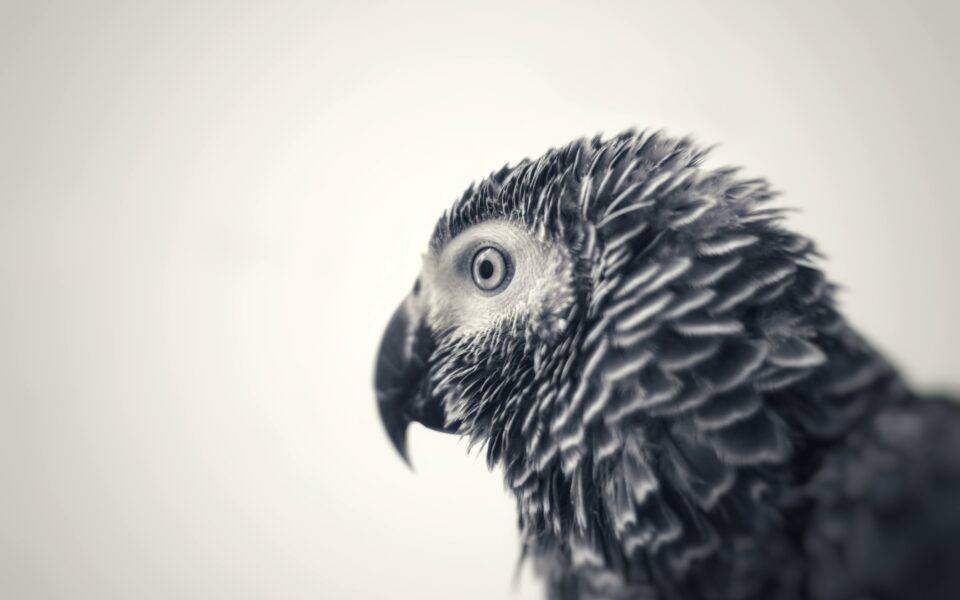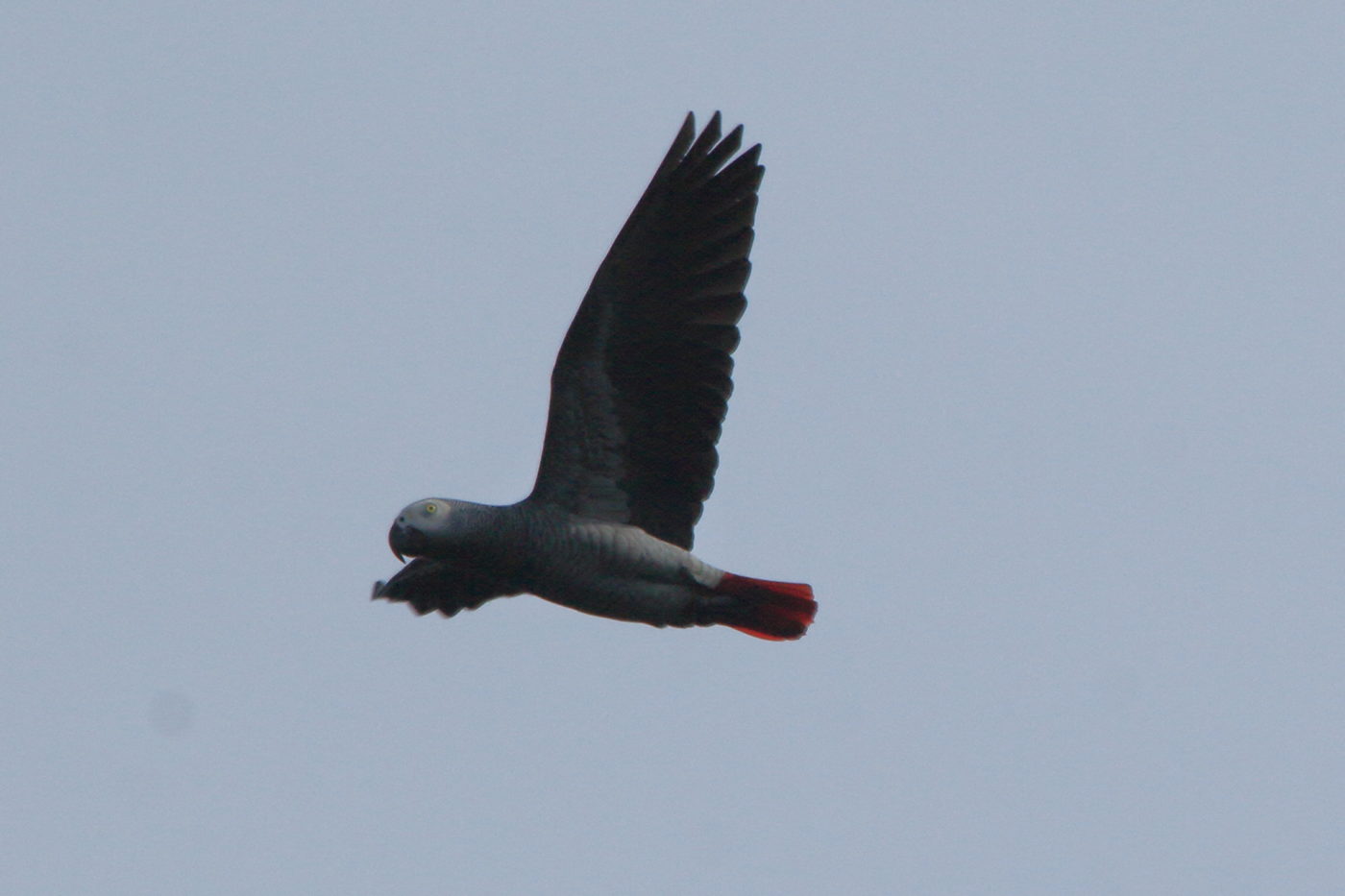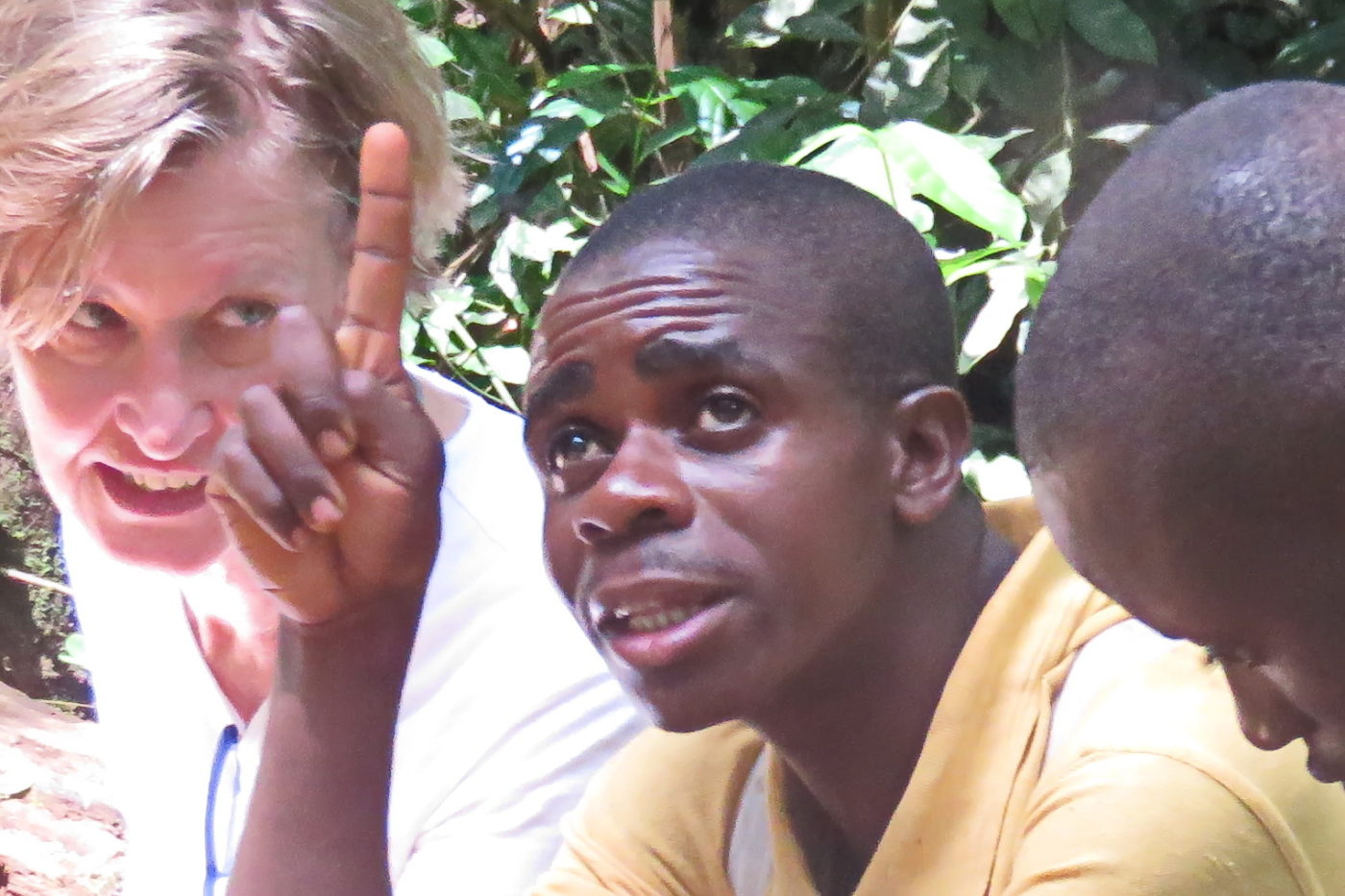
The historian of Bifalone
Nancy J. Jacobs, a professor of History at Brown University, shares her experience visiting a CBI field station. Jacobs is a historian of South Africa, of colonial Africa, of the environment, of animals, and of knowledge about the environment and animals. Her research in Cameroon was funded by a Seed Grant from the Institute for Environment and Society at Brown University.
I went to CBI’s Somalomo Research Station in November 2017 for historical research. I am writing a global history of the Grey Parrot, and I went to the Dja reserve to learn something about how it lives in its native habitat.
Unlike the typical CBI researcher, I was not measuring or observing the present ecology; I was asking questions about the social past. My able research assistant Kamta Tchoffo Roméo Omer is an ecologist, but he took on qualitative research enthusiastically. He scheduled visits, organized motorcycle convoys to bring us, my brother Dave (who served as a research assistant), and a local guide to villages for interviews. On our first day, our noisy convoy descended on the Baka hamlet of Bifalone and people came out to greet us.
We sat under the roof for shade and introduced ourselves. The circle that received us was mostly older men, with women and young men on the side. As the conversation settled, one man started to speak. He spoke for about ten minutes, describing how the village had been founded. The story was about desire, competition, jealousy, violence, and patronage. The particulars were sometimes hard to follow, but it was complex and vivid history. “What is your name?” we asked. He was Menpong Gaston Guy and he was 33 years old.


As it turned out Gaston also knew a lot about parrots. He knew the stories ancestors had told about them. One of the stories began “When the parrot was a man like us...” He told another story of a man who killed his brother, with only a parrot as a witness. The parrot reported the murder and took everyone to the forest to find the body. Of course this story from the ancestors is not factual in a historic sense. No parrot has ever been interested in solving crimes. But what Gaston told us was right in another sense. The lesson corresponded to what he had seen in the forest, “If the parrot calls to the effect that he has seen someone, the minute he takes off the others know that it is the true. Even when the gazelle is in the swamp he will flee as he knows that the parrot doesn’t lie.” Scientists describe this phenomenon of one species warning another as “heterospecific alarm calls.”
No one should be surprised that forest people have long known about the behavior that ecologists and ethologists are now observing and writing about. But what Gaston told us went beyond the phenomenon of heterospecific alarm calls. He said that people in the forest also listen to what the parrot says. People and parrots watch each other, respond to each other, and communicate.
Gaston’s and others’ stories of interaction with parrots describe complex and vivid relationships that existed in the past and continue into the present. This is the stuff of history. I intend to incorporate what I learned in Cameroon in my global history of Grey Parrots and people. I am grateful to the people of Somolomo and especially want to thank my colleague Menpong Gaston Guy the historian of Bifalone, for instructing me so well.